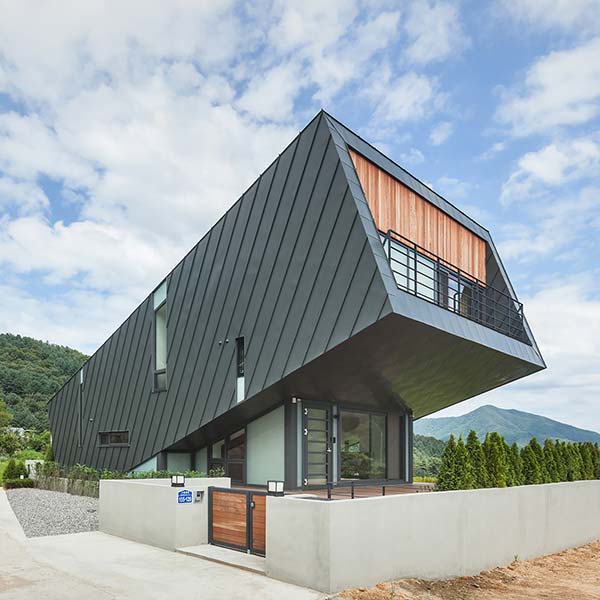
The site is close to the Chungpyong Lake and has hilly mountain on the back and view towards to the lake in front. As most of sites on hills in Korea, Leaning House site also has a mismatch between topography and orientation.
Therefore, one of the first things to solve was the siting of the house in the position where it can have southern sunlight as well as view towards the lake.
The southern part of the program box is lifted up so that the house can get enough sunlight from the South while the house itself orients to the East following the topography of the site. By lifting the box up, a new space was gained where Glass Box for family room can be inserted.
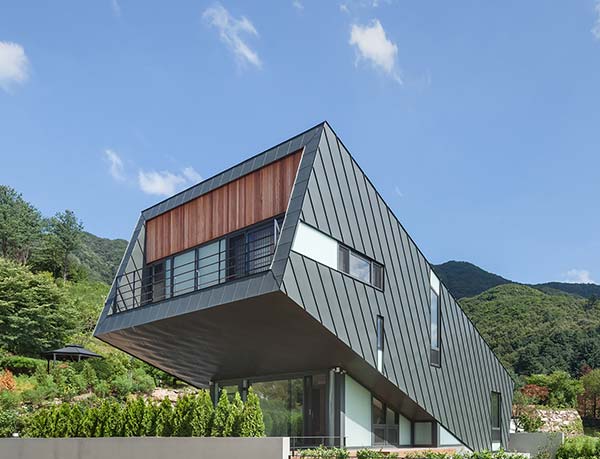
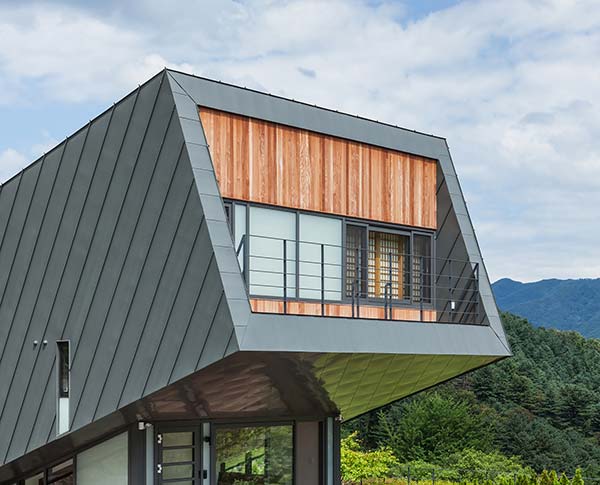
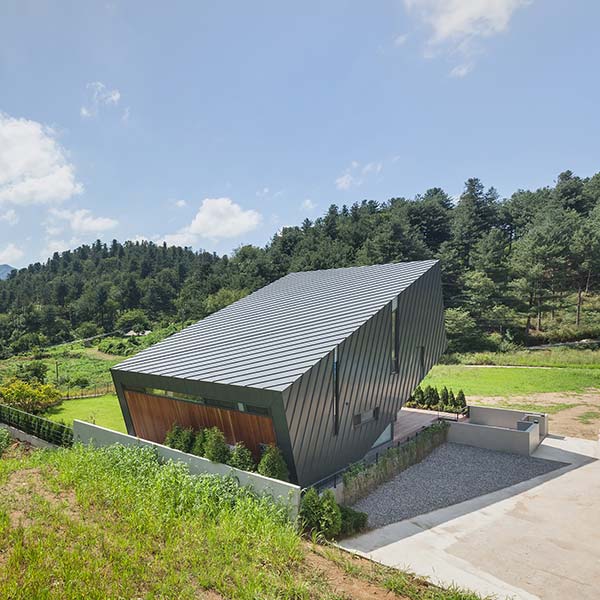
Topology & Typology
In the Leaning House, instead of putting a separate structure to the mass, the form of massing works as a structural system. The “Leaning Box” has a frame structure at the envelope of the box, and is supported by the vertical “Glass Box” so that it can eliminate redundant structural element.
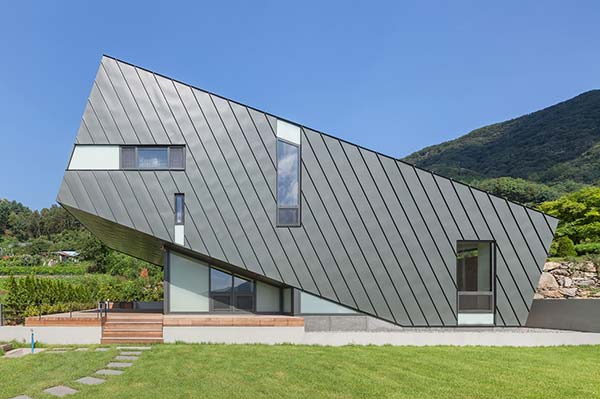
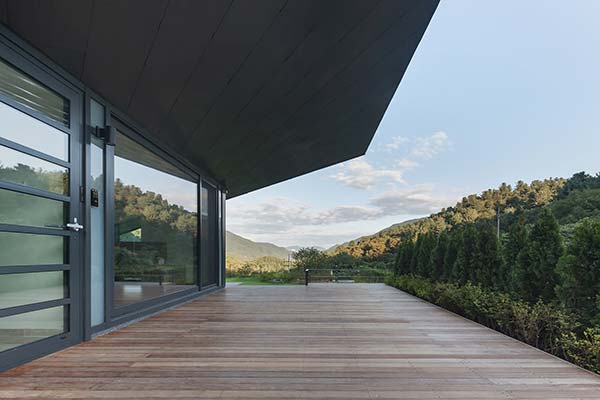
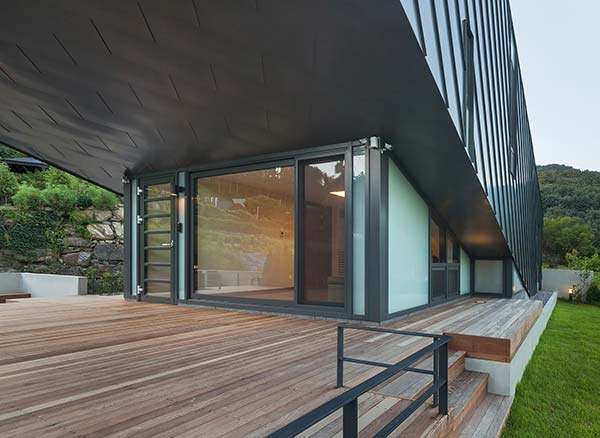
This concept is driven by the architectural vocabulary “Topology & Typology” that PRAUD has been developing. The “Topology & Typology” is a theoretical experiment that is based on Anthony Vidler’s theory on typology. “Topology” focuses on the form of architecture regarding to the relationship between solid and void, while “Typology” develops the system of the building.
In short, “Topology & Typology” tries to find out the harmony between the architectural form and the system that can be called as “Contemporarism”, architectural language of contemporary architecture, just as Modernism became the architectural language not the style in a certain period of time.
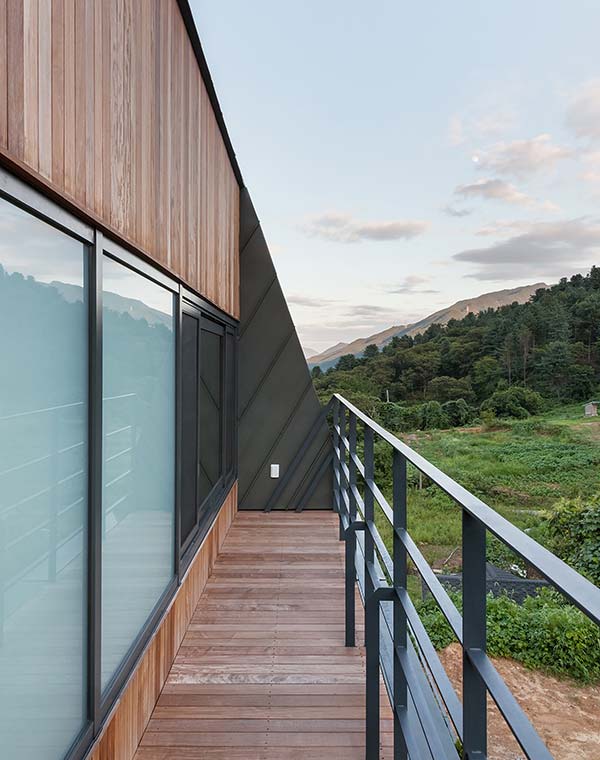
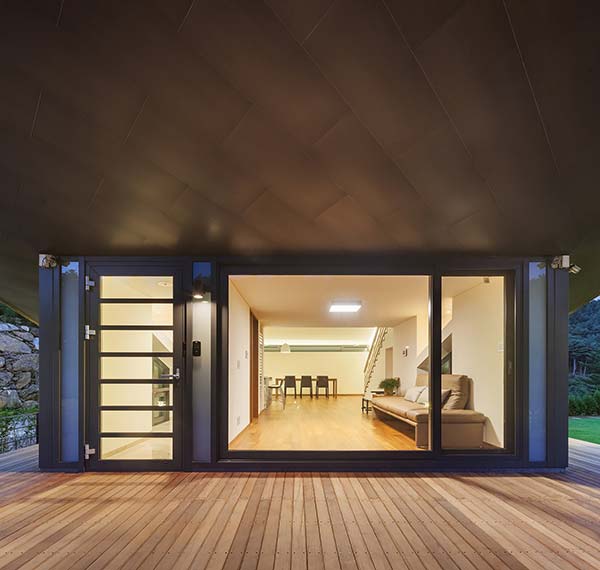
Third-space
By lifting up the program box, a new space “Third Space” is gained. The original requirement from the client was to have bedroom, reading room and living room, and with having the third space, it was able to put a new living room inside and terrace on the outside.
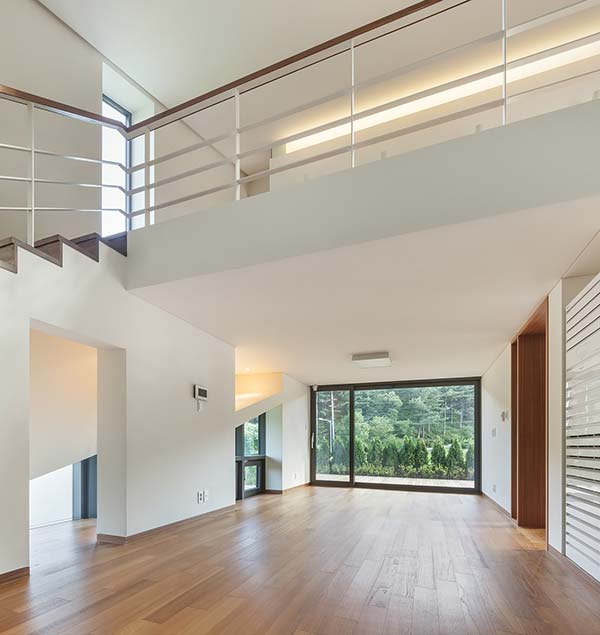
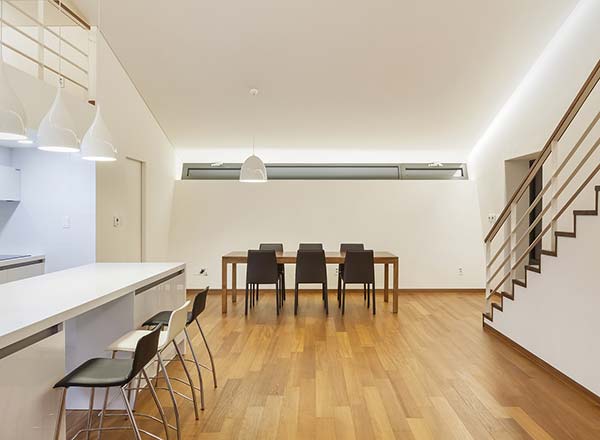
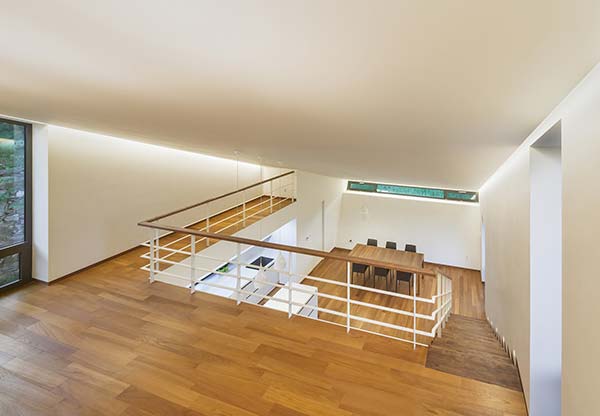
The “Third Space” provides more gradation for the house. The outside terrace is not fully public yet not fully private space either. Also, inside living room is also a semi-public area within the house before getting into more private area. This variation in gradation gives deeper spatial quality in a small house project.
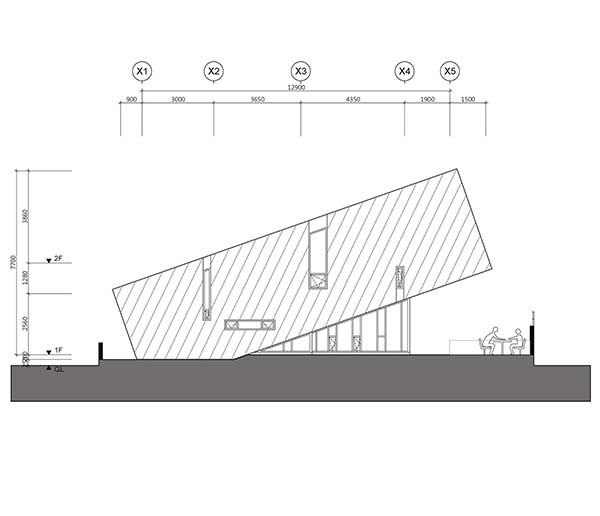
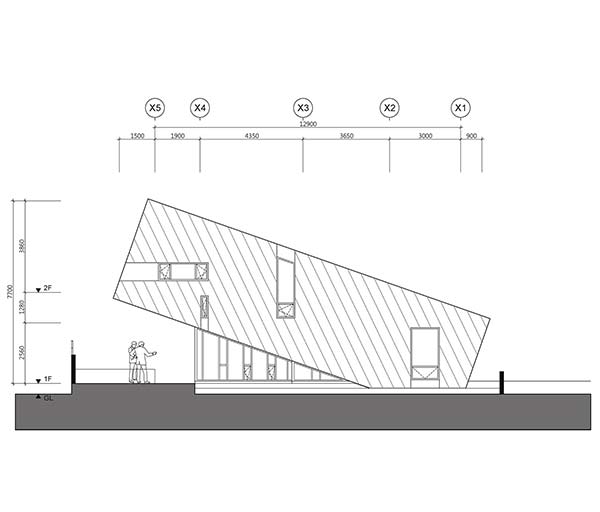
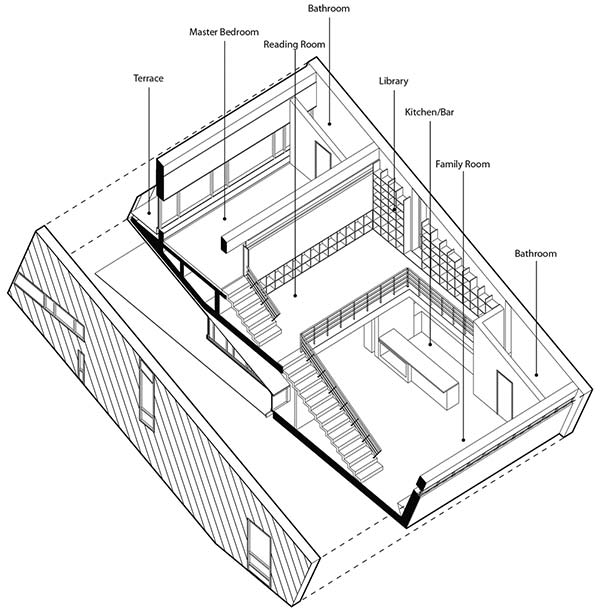
Material
It is extremely important in the Leaning House to have the reading of the “box.” In many cases, including projects with Modernism, envelops are treated separate, and therefore, the facade has one design and material, and the roof has another. However, to challenge the convention, the Leaning House treats all surfaces as part of one box and has same material throughout the surfaces with continuous pattern. Zinc is selected to wrap the whole box with a single material as it can be used for roof, siding and exterior ceiling. And continuous diagonal lines across the envelop enhances the reading of the box.
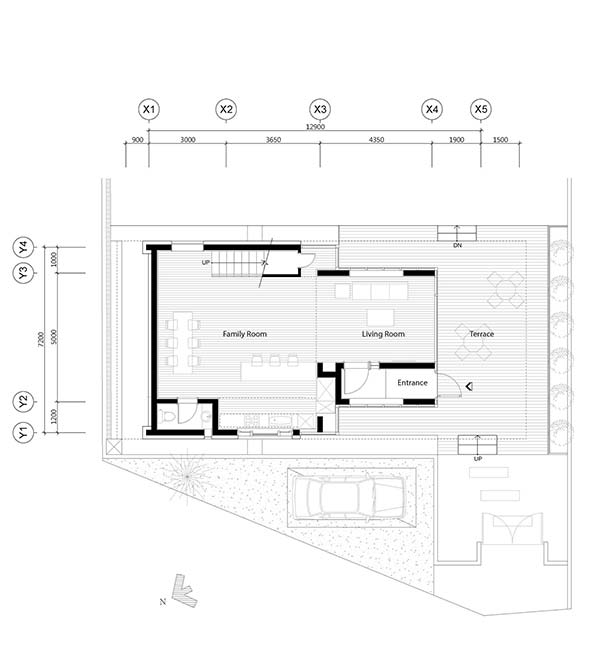
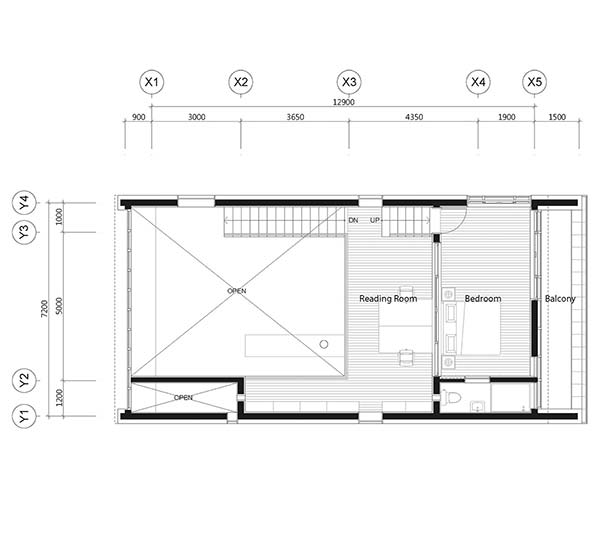
Architects
: PRAUD
Location
: Jinan-gun
Architects in Charge
: Dongwoo Yim, Rafael Luna
Area
: 127.0 sqm
Photographs
: Kyungsub Shin
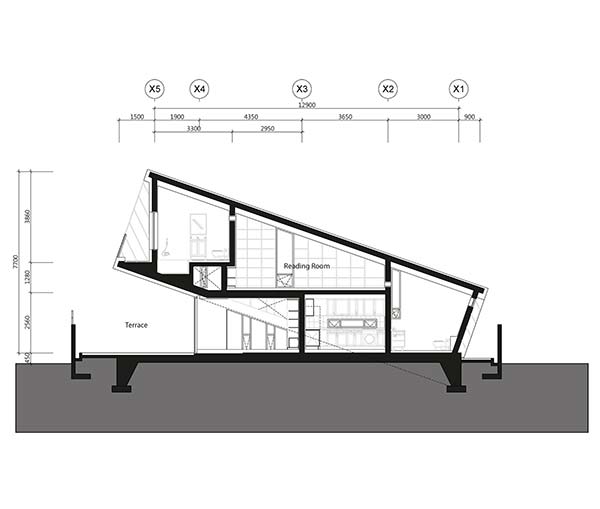
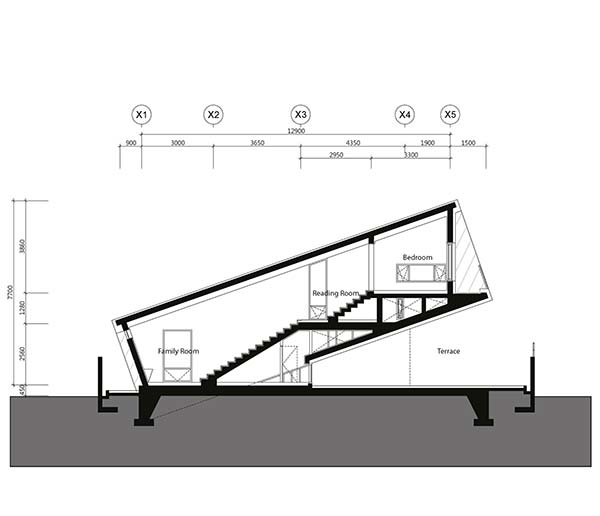
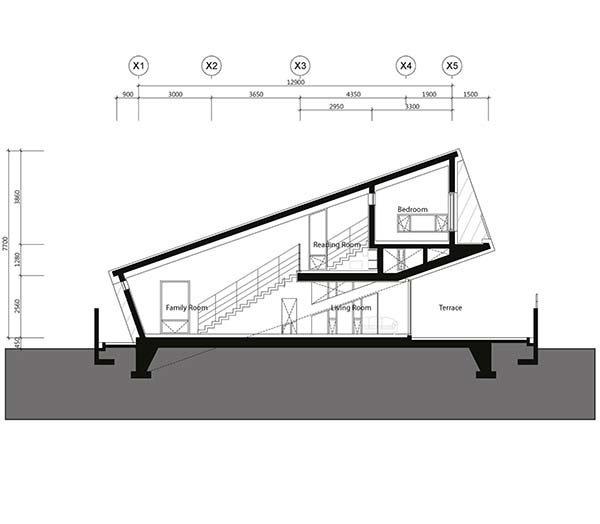
PRAUD was founded in 2010 by Rafael Luna and Dongwoo Yim as a design and research firm focusing on understanding the effects of urban transformations and developing architectural responses through various studies from architectural theories to urban research.
Its own architectural language Topology & Typology has been deeply developed through many projects, both competitions and built projects, as well as through series of seminars. Parallel to developing architectural theory, PRAUD pursues various urban researches to find tangent point between hybrid architecture and urban transformation.
These interdisciplinary investigations have been published and exhibited internationally and let PRAUD to construct a unique perspective on exploring progressive "contemporarism" in architecture, urbanism and design.
PRAUD









